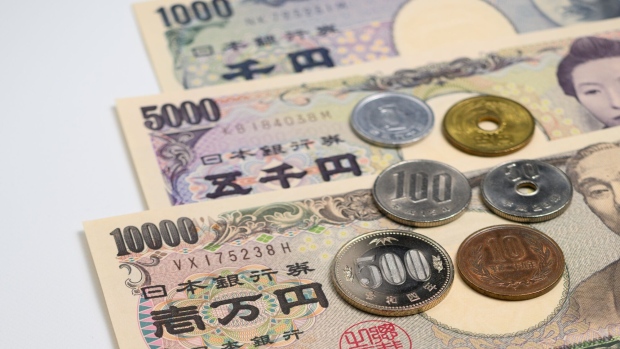Oct 25, 2023
Yen Slides to Weakest This Year Versus Dollar on Wide Yield Gap
, Bloomberg News

(Bloomberg) -- The yen slumped back past 150 per dollar again, raising the risk of government intervention in the currency market and piling pressure on the Bank of Japan to adjust monetary policy.
With another rout in US debt amplifying the yield gap to Japan, the currency on Thursday was trading well within the zone that saw authorities wade into the market last year. The weakness has also been noted by BOJ policymakers, who next week must decide whether to tweak policy that has weighed on the yen for years.
Finance Minister Shunichi Suzuki said he’s watching currency market moves with a continued sense of urgency — language that suggests a high level of concern while being in line with comments he’s made for some time. Deputy Chief Cabinet Secretary Hideki Murai followed, warning that rapid currency moves are undesirable. He declined to comment on the subject intervention.
“The yen’s persistent weakness also adds pressure on the BOJ’s policy settings, whether or not to raise the ceiling for yield-curve control, remove YCC or end the negative policy rate,” said Koji Fukaya, a fellow at Market Risk Advisory in Tokyo. He added that the yen is probably hemmed in for now with intervention risk limiting further losses and the yield gap preventing a recovery.
Japan spent around ¥9 trillion ($60 billion) in September and October last year across three occasions in their first intervention to support the yen since 1998. This year the currency has weakened almost 13% against the dollar, making it the worst performer among its Group-of-10 peers.
The yen traded down 0.2% at 150.48 at 4:13 p.m. in Tokyo after earlier moving between 149.96 and 150.78, this year’s weakest point. A sharp reversal earlier this month when it touched 150.16 had stoked speculation that Japan entered the market.
Officials neither confirmed nor denied whether they propped up the yen at that time. The nation’s top currency official Masato Kanda has since said Japan will take appropriate steps if excessive moves are seen in currency markets.
While one-week historical volatility for dollar-yen on Wednesday reached its lowest level since December 2019, this may not deter Japan from intervening, according to Fukaya.
“This is because authorities altered their definition of excessive moves,” he said. The finance minister said earlier this month that gradual, one-directional currency moves could be considered excessive.
Meanwhile, the 10-year US Treasury yield has soared back toward 5%, versus about 0.88% for its Japanese counterpart.
Nikkei reported over the weekend that BOJ officials were pondering the question of whether to tweak yield-curve control program as domestic long-term interest rates float higher in tandem with those in the US. It didn’t say where it obtained the information.
--With assistance from Anya Andrianova, Carter Johnson and George Leiva.
(Updates with more official comments.)
©2023 Bloomberg L.P.






